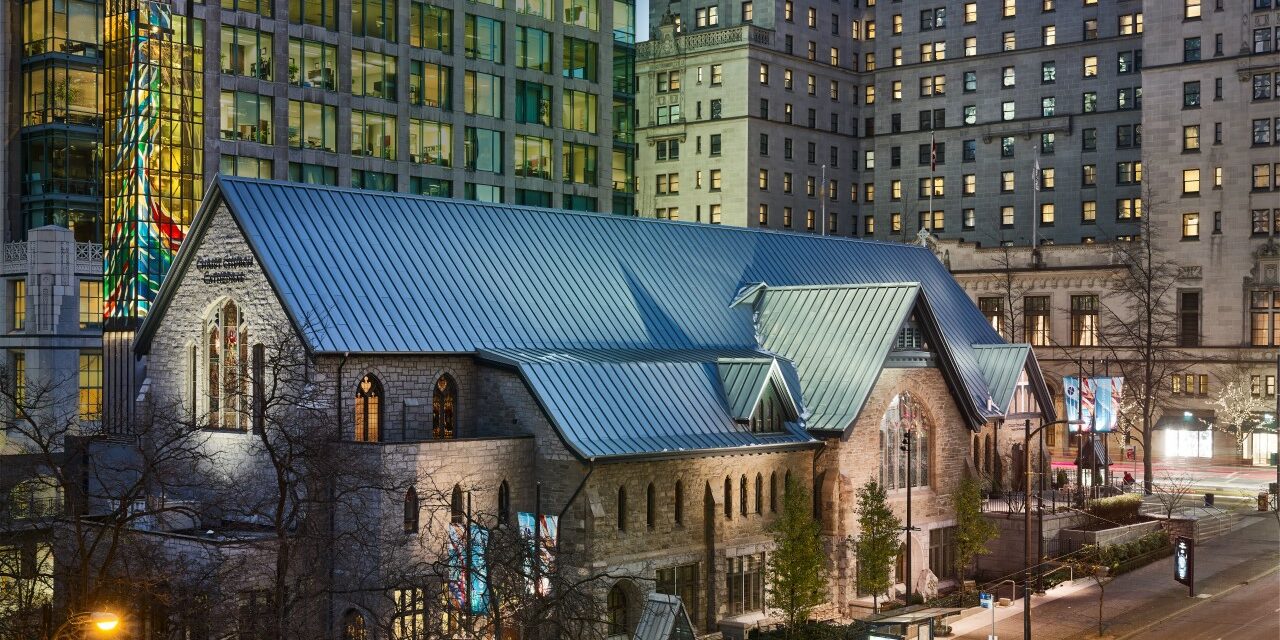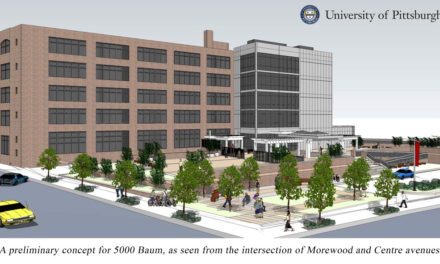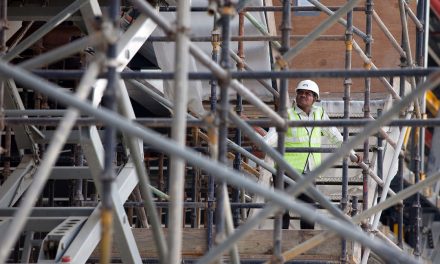A formal plan was undertaken to make the Cathedral structurally sound and to meet seismic stabilization requirements. Aesthetic and acoustical upgrades, along with basic functional improvements, also were included in the multi-phase plan.
The final stage of the extensive renovation—replacement of the roof—became somewhat of a modern marvel in Vancouver. The entire building was completely enclosed in a massive scaffold with a giant tarpaulin covering the structure to protect the church from the weather as the existing roof was removed. The scaffolding reached 100 feet high to allow the use of a traveling gantry crane for moving materials to all areas of the roof.
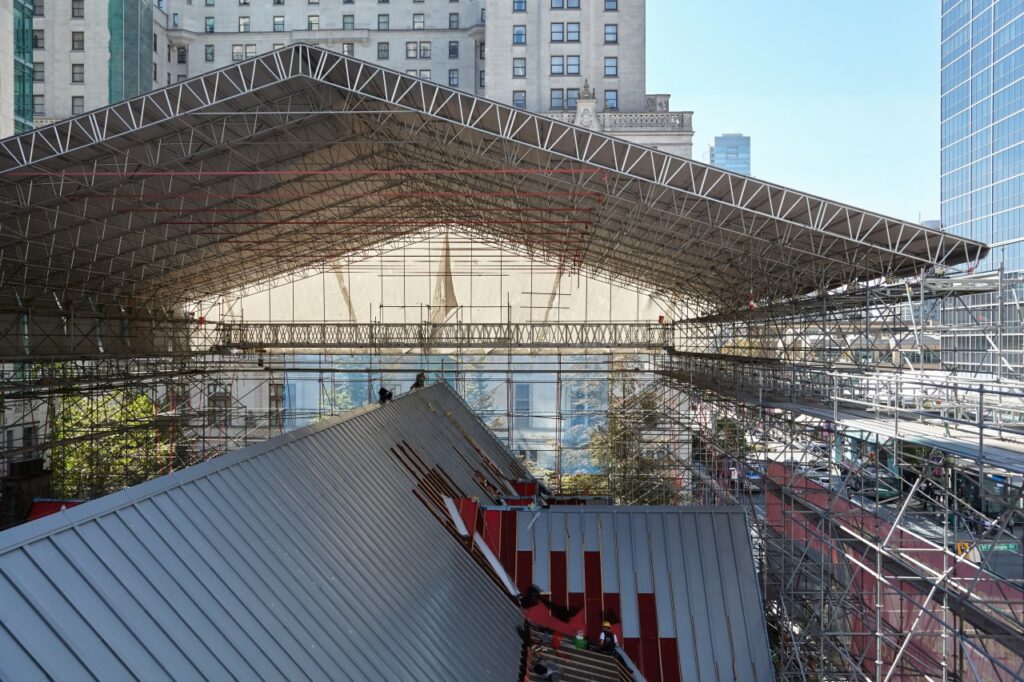
Photo: Martin Knowles, courtesy of RHEINZINK
Approximately 12,000 square feet of prePATINA blue-grey RHEINZINK was installed using a traditional batten seam profile. Installation of the panels was done by TEK Roofing Ltd. of Vancouver. “I’m an old school guy and everything we do is traditional,” said TEK’s president Terry Kellogg. “The RHEINZINK panels are literally all hand formed. No machines were involved other than our breaks.”
The TEK crew ranged from 10 to 20 individuals depending on the work being done. Kellogg worked alongside his crew for much of the job. “I spent nearly two months on the tools working with the boys,” Kellogg said. “It was quite enjoyable.” TEK Roofing specializes in the fabrication and installation of natural metals.
A major issue that had to be resolved before the new zinc roof could be installed was achieving a level and true substrate. During the many years since it was originally built, the structure had settled and shifted considerably—further, the construction methods employed more than a century ago were not nearly as exact as those used today.
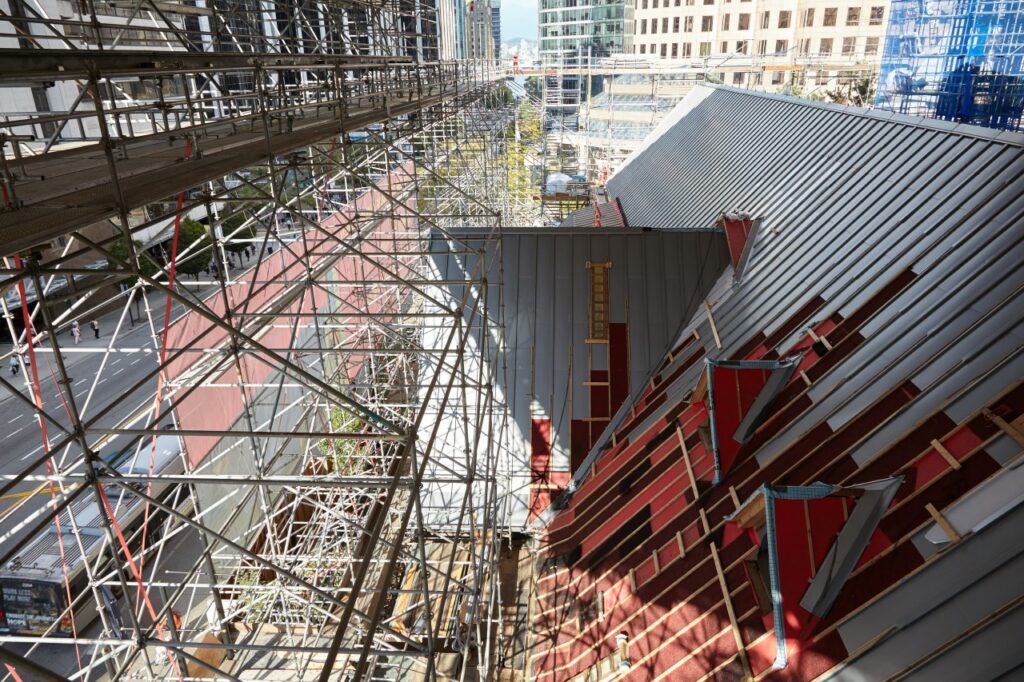
Photo: Martin Knowles, courtesy of RHEINZINK
“We were surprised at how bad the structure was when we opened the building up,” said Ian Birtwell, a parishioner and volunteer project manager who functioned as liaison with the church. “The connections to walls were very poor—basically gravity connections. That’s the way they built in those days. And the roof ridgeline dipped 6 inches. We used a laser system to create a computerized 3-D model that revealed the high spots and low spots so that we could get a totally flat roof.”
Installer Terry Kellogg was quick to give credit to another company that was involved in leveling the strucfture, Pacific Building Envelope Maintenance Ltd. (PBEM). “PBEM based out of Vancouver did a lot of the framing working under the supervision of our superintendent. PBEM was very instrumental in getting us a level roof. It was a tough, tough job. They added a huge amount of structural steel. We couldn’t have done it without them,” Kellogg said.
Architectural design for the project was provided by Proscenium Architecture & Interiors, Inc. of Vancouver. Renovation of the historic building was deemed a Heritage project and had to meet certain guidelines for approval. “Good Heritage practice requires that the renovation be respectful of original materials,” according to Proscenium’s principal Hugh Cochlin. “We gravitated to zinc pretty early in the process. We wanted a durable material that would last forever. We expect to get 100 years or more from the RHEINZINK. Plus it looks contemporary, but is respectful of good Heritage practice. The Heritage Commission quickly approved our use of it.”
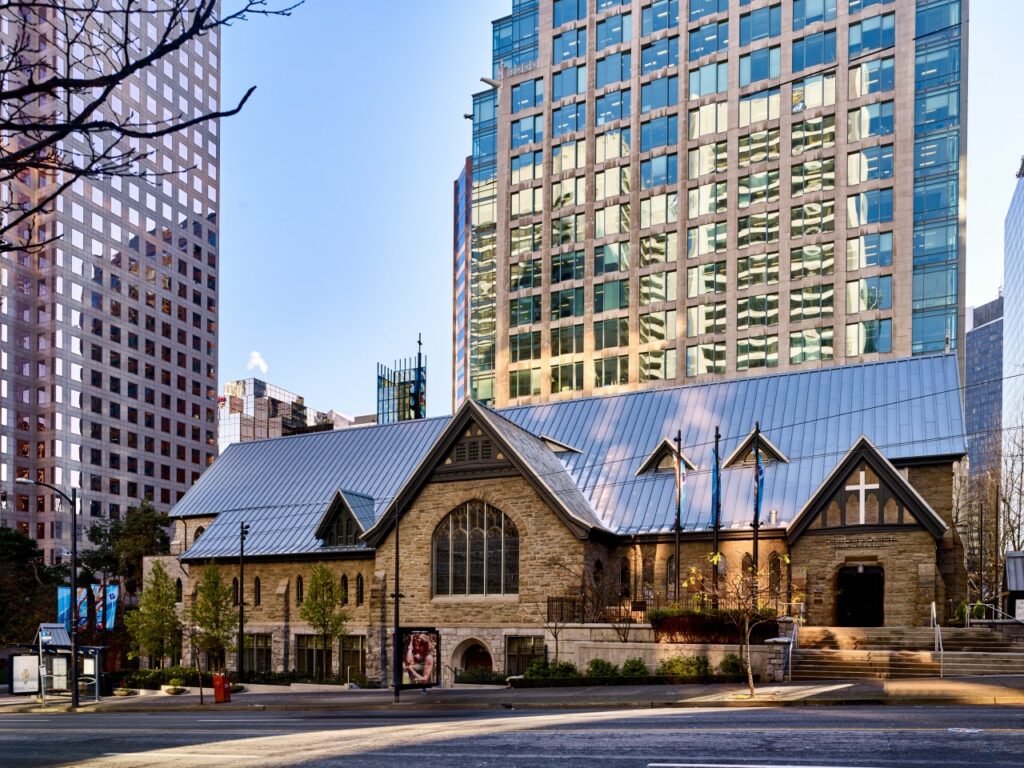
Photo: Martin Knowles, courtesy of RHEINZINK
Kellogg concurs regarding the lifespan of the zinc. “With the pitch of the roof, it’s easily a 100 year roof,” he said.
The traditional prePATINA blue-grey color was also another reason for selecting RHEINZINK. “Everyone likes the way the blue-grey RHEINZINK complements the natural stone on the building,” Cochlin said. “We absolutely love the product.”
Another interesting attribute of zinc that influenced its selection for the project is its ability to repel moss. “The Cathedral is in somewhat of a concrete canyon with high-rises all around and thus gets very little sun,” Birtwell said. “The previous roof was really moss-covered. We sometimes joked that the moss was the only thing holding the old building together.”
The detailing on the job was complex with multiple interfacing. “We had complicated transitions,” Kellogg said. “There was no caulking, no screws—all traditional methods. There were lots of pitch changes and elevation changes that made the installation time-intensive. It was definitely a labor of love.”
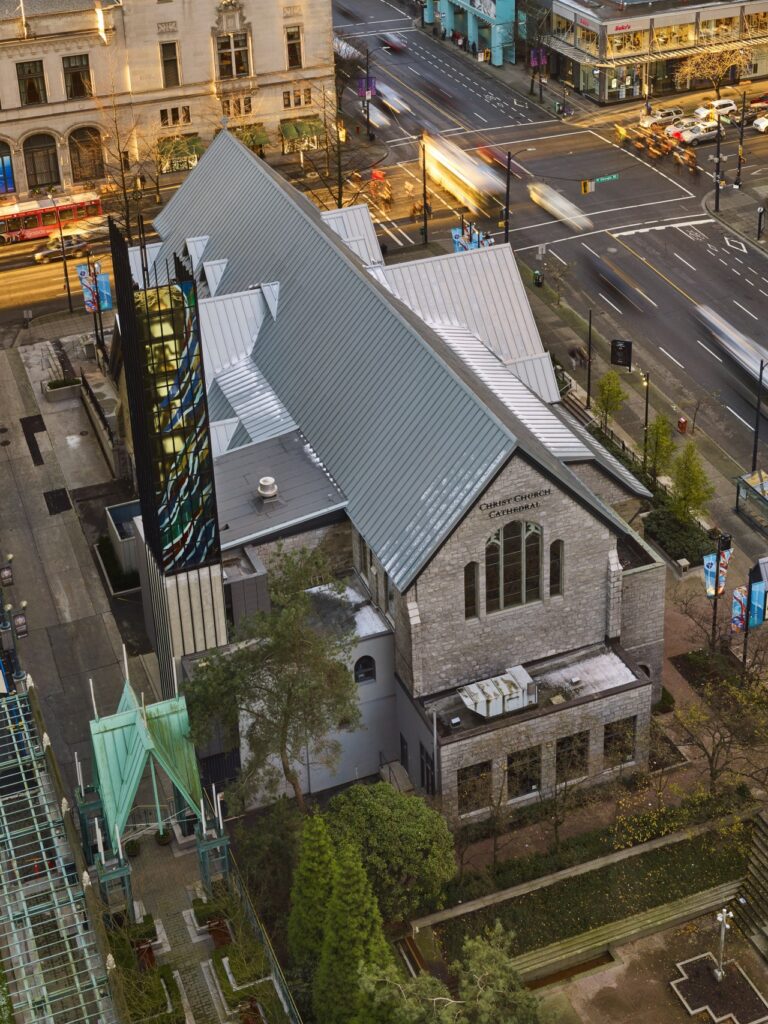
Photo: Martin Knowles, courtesy of RHEINZINK
According to Cochlin, all of the details were drawn by hand. “That’s definitely old school,” he said, “but particularly appropriate for a Heritage project. We worked closely with TEK Roofing and had many on-site meetings. There was definitely more collaboration with the installer than is the norm today.”
The drainage system utilized the traditional 6-inch RHEINZINK half-round gutters with RHEINZINK hangers, outlets and expansion joints. “It’s a beautiful system and complements the scale of the roof,” Kellogg said. On several small dormers, 5-inch gutters were used.
Another major aspect of the final-phase renovation was the addition of a highly-anticipated bell spire set atop the existing elevator core. The open glass and steel structure housing four custom-cast bronze bells was the last significant architectural addition to the project. The bells were cast in France and the bell spire glass features a design by Canadian artist Sarah Hall.
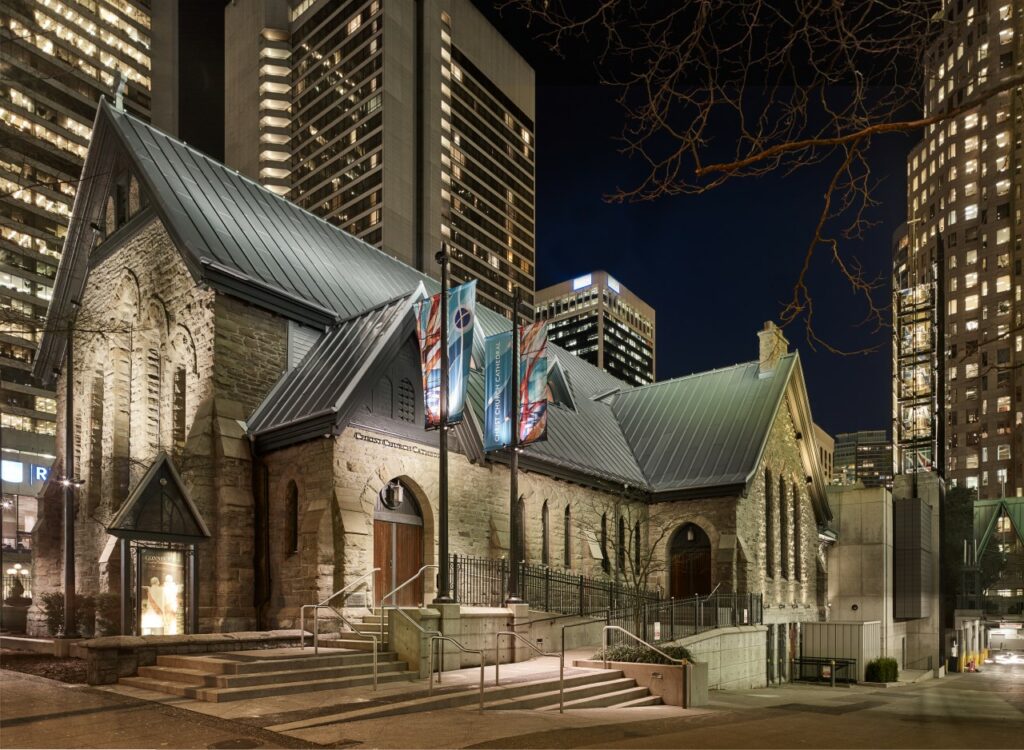
Photo: Martin Knowles, courtesy of RHEINZINK
The bells ring at the beginning and end of the workday, on Sundays, for weddings and funerals, and to mark special celebrations in Vancouver’s civic, interfaith and multicultural community. “Completion of the project protects the heritage of this historic and much-loved church,” said Peter Elliott, dean and rector of Christ Church Cathedral.
The general contractor on the project was Scott Construction Group, Burnaby, British Columbia. The RHEINZINK distributor was Alesther Metal Distributors, Ltd., also in Burnaby.
RHEINZINK America, Inc. led the introduction of architectural zinc in North America and continues to offer one of the industry’s most reliable, trusted brands. Architects and contractors are supported by unparalleled customer service and technical assistance. RHEINZINK is readily available through an established network of qualified distributors and systems partners across the United States, Canada and Mexico. Ideal for roofing, façade, gutter and interior applications. RHEINZINK is environmentally friendly, 100 percent recyclable and offers a potential lifespan of 100 years or more.
For more information on RHEINZINK, call 781-729-0812 or visit www.rheinzink.us.
RHEINZINK will be exhibiting at AIA in booth #4844

